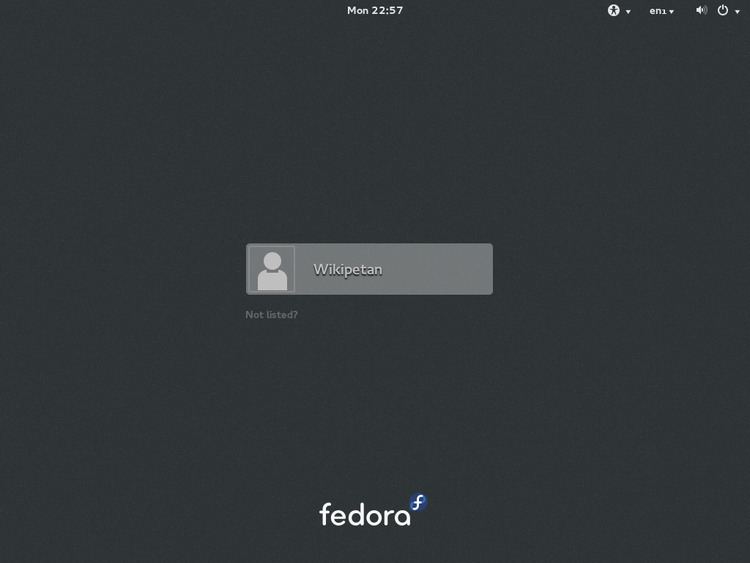Written in C | ||
 | ||
Developer(s) The GNOME Project (William Jon McCann, Brian Cameron, Ray Strode) Stable release 3.22.3 (9 November 2016; 3 months ago (2016-11-09)) [±] Preview release 3.23.91 (1 March 2017; 7 days ago (2017-03-01)) [±] Operating system Type X display managerLinux on the desktop | ||
GDM (the GNOME Display Manager) is a display manager (a graphical login program) for the windowing systems X11 and Wayland.
Contents
The X Window System by default uses the XDM display manager. However, resolving XDM configuration issues typically involves editing a configuration file. GDM allows users to customize or troubleshoot settings without having to resort to a command line. Users can pick their session type on a per-login basis. GDM 2.38.0 is the last version that features customization with themes; subsequent releases do not support themes.
Software architecture
The GNOME Display Manager (GDM) is a display manager that implements all significant features required for managing attached and remote displays. GDM was written from scratch and does not contain any XDM or X Consortium code.
Components
GNOME Display Manager (GDM) is the name, which is used to describe the software package as a whole. It comprises the following components:
Hidden features
Until version 2.22, GDM had a few Easter eggs, in the form of strings to be entered in the username box. These can be found in the source file "gui/guilogin.c", in a function named "evil".
Queen of England
Some of the copyright notices of GDM refer to the "Queen of England", whom release announcements from version 2.2.1 also named as a maintainer. Subsequently, developers realised that the title "Queen of England" has not existed since the Acts of Union of 1707.
Removed features
As of version 3.0 the GNOME display manager switched to using AccountService for saving the user's selected session rather than storing it in the user's home directory, effectively making it unusable in a networked environment.
